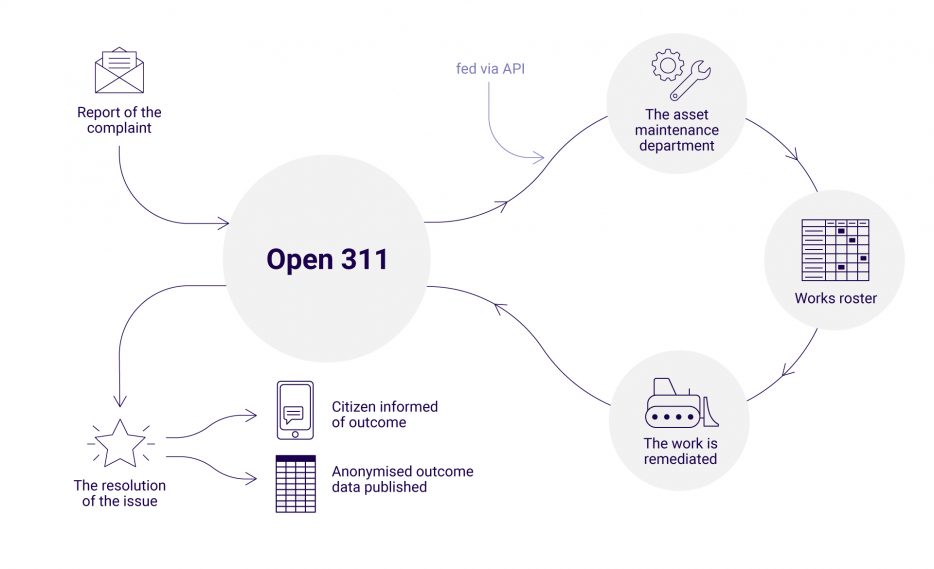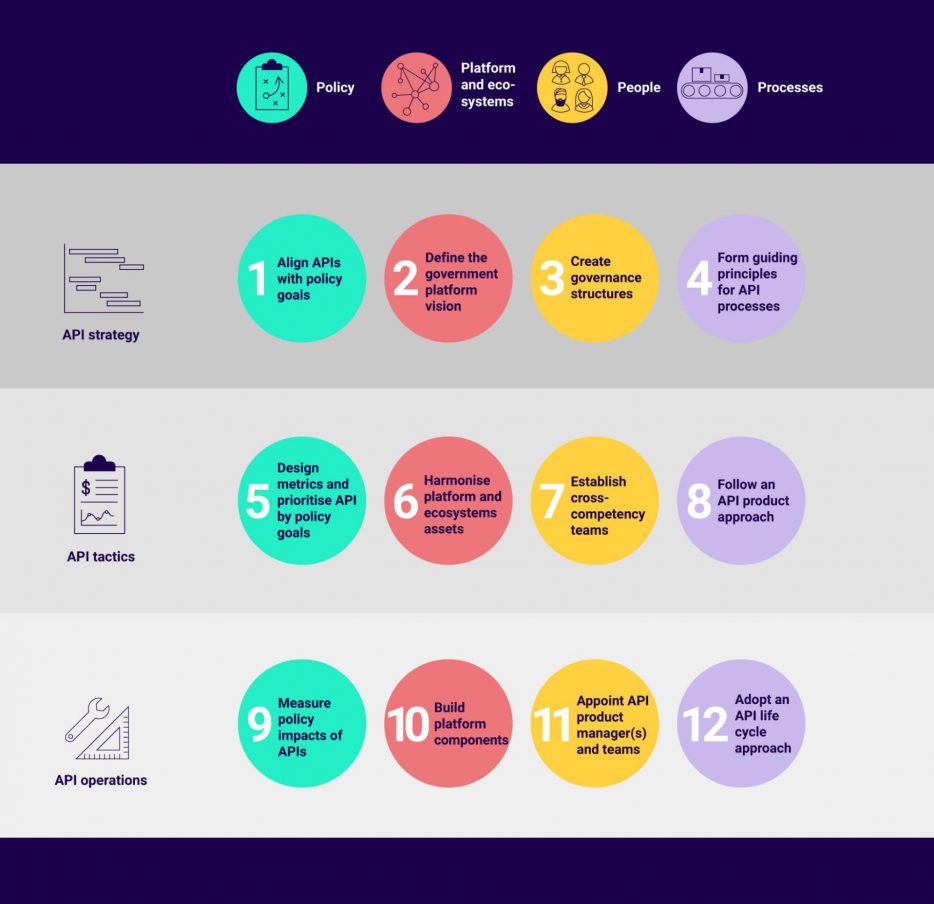City governments are looking to API management technologies and infrastructure to optimise resources, automate city operations, exchange data, and extend digital services. This has been evolving over the past ten years, from e-government to digital government to smart city models. Now, the COVID-19 pandemic and recent climate crisis impacts are speeding up infrastructure modernisation plans from a two- to five-year steady rollout to a six-month necessity.
This transformation is occurring at national and regional levels. Traditionally, it has been led by individual departments, such as transportation or weather services. But now cross-departmental digital government agencies are looking to take the lessons learned and apply a more cohesive, government-wide approach.
The recognition of the importance of API management for digital governance is often most pronounced at the city level, though implementation maturity fluctuates wildly from one municipality to the next, all around the world.
Choosing an API-based approach does not lock any city government into a particular vendor or technology option; rather it can provide long-term flexibility and security to that government’s infrastructure.
There are multiple approaches to APIs, including REST, GraphQL, and event-based architectures. These do not need to be defined in strategic policy. However, the risk with digital government policies that simply call for data and digital services integration is that implementation teams will look for new build approaches rather than relying on the humble API.
As a city IT architect, when you commit to an API-enabled approach, you are committing to a composable architecture in which data and services can be connected in ever-evolving workflows and connection chains. As API technologies mature even further, you can easily adopt new approaches without needing to tear down your existing infrastructure and rebuild.
Why do cities need APIs?
City governments are under multiple competing pressures and budget constraints. Citizens are clamouring for constant digital access to do everything from reporting a pothole, to submitting a request for community services to paying their bills. With the COVID-19 pandemic and recent extreme weather events, cities have also increasingly needed a remote, digital way to alert residents to threats.
APIs allow governments to integrate their services into new websites and mobile interfaces. Today, many of the relationships between city, regional, and national tiers of government also require data exchanges to be constantly connected. APIs are a robust mechanism that allows for security and access control permissions to be adjusted depending on the level of sensitivity of the data and the role of the data user.
One of the biggest needs for cities is the ability to automate city operations through sensor networks, enabling a constant stream of real-time data. This data can be channeled via APIs to machine learning algorithms, and alerts established to trigger action when incidents fall outside of a normal range.
The city as a self-regulating organism is already here: street garbage containers in cities like Barcelona contain sensors that measure the container weight, so that waste management routes can be automatically optimised as garbage collection points fill. This reduces the costs of waste management services and increases environmental health and safety.
In this waste management use case, APIs collect and channel sensor data, integrate and update machine learning algorithms based on the data about the acceptable levels of waste, and send alerts to optimisation route-planning maps and software.
From SMART city to SMARTIE
APIs support:
- Automated data and sensor workflows
- Increased citizen engagement through easily updatable digital services
- Real-time data exchange across government tiers
Together, these capabilities are often referred to as creating SMART cities: those that focus on Sustainability, Mobility, Affordability, Resilience, and Technology. But drawing on health equity principles presented by Dr. Oni Blackstock, founder of Health Justice, perhaps it is time for cities to consider themselves SMARTIE: adding a focus on inclusion and equity in city planning. Already, city API leaders around the world are adding elements to their API infrastructure, such as supporting IT startups in local economies, making community services accessible to all, and offering ways for small businesses to get new financing.
City API leaders
Around the world, cities are using APIs for new approaches to digital government.
In Antwerp, a City-as-a-Platform model has allowed the IT department to speed up the design and delivery of new digital services by a factor of ten. While the IT department was known for its innovation, it was unable to execute on more than a few projects at a time. By moving to an API-enabled architecture, the IT department has been able to enlist IT providers and developer teams across the Belgian city to help build new tools and government operations. That strengthens the developers’ industry experience and helps them win more work, bolstering the local economy.
Antwerp is even able to use APIs and machine learning in contract negotiations: IT providers seeking to build for the city must submit an architecture map of their planned implementation. Machine learning algorithms (connected via APIs) assess the architecture designs and propose currently available APIs from the city’s API catalogue that could be used in the new service scope. This reduces duplication and complexity, speeds up development, and cuts down inefficiencies.
In New York City, the Benefits Screening API enables inclusion and equity to be strengthened as part of the city government’s community services management. Residents use an anonymous website form to identify what benefits and community services they are entitled to receive at all levels of government. The website form is connected to the database via the same API that powers community services integrations, so that the eligibility data can be accessed within service support and client onboarding processes. Because the form is anonymous, undocumented residents can use it without fear of persecution.
In Singapore, the government’s national identity API allows citizens to verify their identity online and access services. This speeds up delivery of services, since citizens do not need to repeatedly enter their data each time they connect with the government. Singapore’s government has made the identity verification API available to other businesses, and it is now used by banks to confirm a new account or loan applicant’s information, leading to increases in financing available to small businesses across the city-state.
Building to standards
To speed up city digital services, open standards are essential. Open standards prevent the need to reinvent the wheel and are more robust than customised API approaches, since multiple developers have already assessed the API’s operations and security level.
If your developer team is building city APIs, there are some clear standards to follow. In particular, there are two types of standards to use:
- API standards templates: For specific tasks, cities around the world have defined standard ways to manage operations. Open311, for example, is an API standard that describes how to organise data and services functionality so that people can report potholes, graffiti, or other issues. API calls route the complaint to asset maintenance, where the complaints are logged and cleanup teams rostered. Once the job is completed, APIs send notification messages to the caller. Cities have adapted the call codes for complaints—some cities offer snowplowing, for example, while others don’t need to—but overall Open311 is built to a consistent design so that any complaint management software can be plugged into the workflow. A European collaboration called CitySDK created similar API standards for travel information, decision-making, and reservation of city resources like town halls.

- Specification standards: You can also use OpenAPI Specification (OAS) standards for the APIs you’re building. OAS allows your teams to describe security requirements when using the API (such as how often certificates must be reviewed), providing a consistent structure so that anyone unfamiliar with the API can quickly understand what it does. The standards are also machine-readable so that you can feed their design into your testing processes. As you create new features or integrations, your software development pipelines automatically check if the use case will function with the API. With the growing use of sensor data by SMART-enabled cities, some city governments are also using AsyncAPI to describe APIs used in event-driven architecture designs.
Strategy and action
The API framework for digital government provides a model that you can use to implement API government programs. It is made up of 12 proposals that support APIs, from the strategy level and tactical decisions like resource allocation and priority setting, to operational concerns like implementation of technical best practices.

The model assumes that cities (and all governments) may have already embarked on some API activities. Rather than using a linear model that imagines each city at the starting line, you are encouraged to assess your city’s maturity against the 12 proposals and work to “level up” so that over time, API-enabled infrastructure is in place across all your operations in a consistent and cohesive manner.
Globally, adoption of APIs by city governments varies widely. Some cities in the UK, France, Spain, the Netherlands, Finland, the United States, and Canada are fairly advanced and are using APIs extensively behind the scenes to power their digital infrastructure. The Asia-Pacific and Latin America regions are just as diverse, although are often less mature. India is a standout, having invested heavily in smart city infrastructure powered by APIs.
Even in advanced cities, however, APIs were generally introduced for a specific use case, such as transport planning or to enable Open311. Fostering the next level of maturity and growth will require greater strategic planning and reuse of APIs across all city departments and services.
Governments can begin this effort by identifying common elements that are used by all city services—such as the ability to collect citizen or business information via a form, to enable a payment, or to check land use planning regulations. By building APIs for these functionalities first, cities can mature quickly toward digital government infrastructure.
Conclusion
As city governments look to improve their digital infrastructure and services for residents, API management services like Tyk can help them embrace a digital government and API infrastructure agenda. Each department can manage its own API gateway, which feeds into a central API management platform. The result? Departments can mature at their own pace while the platform manages consistency, standardisation, and central oversight of infrastructure.
